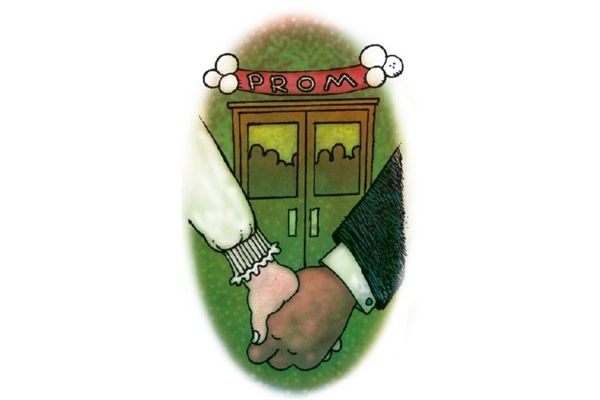Racial Taboos
June 01, 2017
Ethical Educator

Scenario
In a community in the Deep South that considers interracial relationships taboo, the high school principal would quietly address black/white relationships by talking to parents to keep the relationships from advancing.
A teacher at the high school tells the wife of the superintendent that she thinks the superintendent’s daughter is dating an African-American male. “Personally, I wouldn’t have cared,” the superintendent said. “He was a pretty good kid, but I knew what my community thought.”
Advice for the superintendent?
Shelley Berman:
The superintendent should seize this opportunity for leadership. The civil rights movement is over half a century old. It’s long past time to end the taboo against interracial relationships. Instead of ignoring the racism behind this taboo or, even worse, silently condoning and thus perpetuating it, the superintendent should step forward as an advocate for equality and a model of openness and acceptance.
Because the superintendent knows his community, he realizes the risk he will be taking. Yet through his example, he will encourage those who have been silenced to speak out and those who have feared ostracism to stand up for their beliefs. Given the community’s prevailing attitudes about race, there may be other students, such as members of the LGBTQ community, who are also struggling against prejudicial attitudes and actions. Simply by acknowledging and showing pride in the relationship their daughter has developed with another student, the superintendent and his wife will have a powerful impact on the community.
Because racism is so embedded in the community’s culture, the superintendent should think through strategies and build on opportunities to help the community understand the consequences of prejudice and to create an environment of acceptance and appreciation of difference. Given his daughter’s current dating relationship, he may not want to open up an immediate public dialogue that puts her in an embarrassing position. However, at some point the community needs to have a more public dialogue that could include faculty meetings, parent forums, and class discussions.
The superintendent has the opportunity to model tolerance, acceptance and moral courage for students, parents and the community as a whole. To do otherwise is to undermine the progress we have made in freeing our society from the painful racial prejudices and intolerances of the past.
Sarah Jerome:
The principal and the superintendent must adopt a 21st century recognition that the world is a diverse community. Continuing to encourage racist attitudes among students and their parents is not the role of enlightened educators. Nor is dodging difficult conversations.
The Southern Poverty Law Center has excellent teaching materials to help both the principal and the superintendent address these important community issues with students, staff and parents. Modeling acceptance and embracing diversity is one of an educator's most important roles.
As a person who grew up in the Deep South, I recognize the entrenched habits that have been time honored in some communities. I also recognize that courageous acts to reshape community norms toward tolerance and embracing diversity can get a principal and superintendent fired. Some stances are worth getting fired. In my opinion, this one is.
Mario Ventura:
This situation places the superintendent between the values of the community and the law. Interfering with the personal relationships of students because of race fringes on discriminatory practices. Allowing this practice to continue could result in an Office of Civil Rights investigation and could create a liability to the school district.
The superintendent should prioritize the letter of the law and discourage district personnel from interfering with the personal relationships of all students. He also should inform the governing board about the current practice and the legal implications. Some members of the community may criticize the superintendent and the governing board. However, by changing this practice, they will keep the district compliant with the law and with the educational mission of public education -- to provide an equitable learning experience and to respect and dignify the race and ethnicity of all students.
Maggie Lopez:
The superintendent should not be condoning this principal’s practice of telling parents their students cannot date because of their race or color. It is ethically and morally wrong for the high school principal to engage in discriminatory practices of this nature. This behavior could result in a potential lawsuit for the district. Most disheartening is the fact that the superintendent, as the district leader, did not immediately put a stop to the principal’s practice but instead supported it, by enforcing it with his own child. The superintendent, as do all educators, has a responsibility to maintain a standard that does not tolerate bias.
The superintendent must ensure immediately that the principal does not continue this practice. As school district leaders, the superintendent and principal represent and are the voice for all students, to include all races, nationalities, economic status,
abilities and backgrounds. The superintendent must assure he and all staff are engaging in behaviors that are moral, ethical and legal, regardless of what the community perceives as taboo. He has an opportunity to show the community that the district’s
leadership supports the diversity and individual rights of all students.
The Ethical Educator panel consists of
- Shelley Berman, superintendent, Andover, Mass.;
- Sarah Jerome, a retired superintendent in Arlington Heights, Ill., and an AASA past president;
- Maggie Lopez, a retired superintendent in Pueblo, Colo.; and
- Mario Ventura, superintendent, Isaac School District, Phoenix, Ariz.
Each month, School Administrator draws on actual circumstances to raise an ethical decision-making dilemma in K-12 education. Our distinguished panelists provide their own resolutions to each dilemma.
Do you have a suggestion for a dilemma to
be considered?
Send it to: magazine@aasa.org
Advertisement
Advertisement
Advertisement
Advertisement



